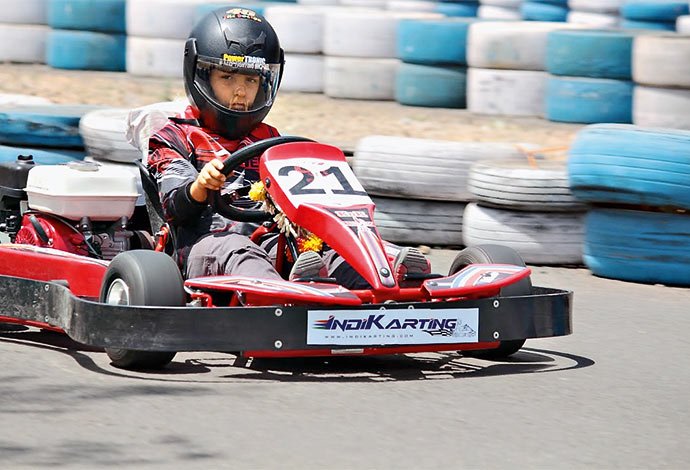The Pioneering Parsis Of Panchgani (Part 1)
When John Chesson came to these hills to decide on the location of the new health resort we now know as Panchgani, he was accompanied by a Parsi gentleman, Mr. Merwanji Edulji Mistry. When their recommendation was accepted and the decision to develop the new health resort here was made, both of them bought property. Chesson, as is well known, built his house where we now have New Era School. Merwanji also bought property and built houses, among which are Panchgani Castle, and Aeolin Terraces. He was a bachelor, and after his demise, his properties went to his nephew, Rustum Dubash, who as a young boy had accompanied him on his expedition with John Chesson.
Rustom Dubash became an accomplished building contractor. Many of his buildings are still standing as beautiful as when they were first made. Most of the buildings of St. Peter’s School, and Kimmins School have been built by him. His family is the oldest of all the settlers in Panchgani.
Two of Rustom’s sons, Sohrab, and Pesi, settled in Panchgani. Adi went to Ahmedabad. Sohrab continued in the building profession, while Pesi Dubash, an all rounder, was into a number of things. He operated the film projector at Batha School, ran a tuck shop there, did maintainance work there and also in St. Peter’s School, in addition to running his own fruit processing unit. He has since, sold his Panchgani property. His son, Xerxes now has a recreation park, Velocity, just outside Panchgani on the road to Mahabaleshwar. Pesi, now in his nineties, but very much alert sits near the ticketing counter, getting up with a welcoming smile when old acquaintances come to greet him.
Rustom Dubash had two daughters, Meher Contractor, and Gul Mehta. Meher became famous for her work on puppets. She was an all-India authority on this subject and received many awards from the Government for her research.
In an earlier article, I have written about the ‘Three most Beautiful Bungalows in Panchgani’. All three were built by Parsis. Dil Pazir was built by the well known actor-director-producer, Sohrab Modi. The other two, Meherbai House and Lawrence Villa were built by Mr. Pallonjee Plumber. As mentioned earlier, Meherbai House is now owned by the film personality, Aamir Khan. Lawrence Villa is with St. Peter’s School.
Another film personality to settle in Panchgani was the famous producer Mr. D. R. D. Wadia. He built Nakra House just before Taighat on the road to Mahabaleshwar. His son Sher, had a restaurant, ‘Log Cabin’ there after D.R.D. passed away. The house has since been sold and demolished. A new structure has come up in its place. Sher has bought a small fort, Pandavgad on the opposite hills, where he lives as a hermit.
In the early 1900’s a Parsi educationist, Mr. Navrosjee Billimoria started The Parsi Boys’ High School, later renamed Billimoria High School. This was the second Boys’ school in Panchgani, the first being the European Boys High School, later renamed St. Peter’s. His sons, Burjorjee and Rustumjee, continued with the school till the early 1990’s, when they sold it. A few years after the Parsi Boys’ School was started, Mr. Savaksha Manekjee Batha opened his own Parsi Girls’ School, which became The S. M. Batha School. Mr. Batha also built a beautiful sanatorium, the Batha Sanatorium where Parsis could stay comfortably at a reasonable rate. The Batha Sanatorium has a number of small identical cottages on either side of a long central garden. A symmetrical masterpiece.
The earliest hotels were also owned by Parsis. The first was Hormusjee Satarawala’s Prospect Hotel, which his son, Dadi handled later. Then came Khambatta’s Mount View Hotel on Kerawalla’s plot, and Sohrabji Davierwalla’s Il Palazzo Hotel just below Prospect. These two hotels are still running, owned by the descendants of the original founders.
A solicitor, Pestonji Kanga bought the entire hill between Kach Bawdi and Dulwich House. It became known as Kanga Hill. There is a very popular point below the hill, with a beautiful view of the Krishna valley. This is commonly called ‘Parsi Point’. Originally it was known as ‘Pesi’s Point’. It was a meeting place for Pestonji Kanga and his friends. Somehow, by common usage the name has got changed to Parsi Point.
Panchgani was originally the main centre for the treatment of tuberculosis. A hospital with all the latest facilities for treating TB, the Bel Air Sanatorium was started just a hundred years ago by Dr. Rustumjee Billimoria It was funded mainly by Sir Dorabjee Tata. Dr. Billimoria’s son, Dr. Bomi Billimoria spent the major part of his short life treating the TB patients, and performing all sorts of difficult operations to keep them alive. A completely Parsi venture, but benefitting all. Now, I doubt if there are any Parsis in the hospital, even among the employees, but Bel Air has moved with the times and is the leading place for the treatment of HIV in Maharashtra. Even so, a Parsi Trust in the U.S.A., Parsiana gave a generous donation to Bel Air, to enable it to start a Nursing College.
In Bhilar village, between Panchgani and Mahabaleshwar was a very beautiful garden. The Bhilar Garden, spread over a vast area had over a hundred varieties of roses, in addition to a number of exotic fruit trees. It was a favoured picnic spot. I remember an ornate stone sun-dial. It had instructions to convert the local time, shown by the sun-dial to Indian Standard Time. The Garden was owned and developed by Eruch Hakim, another prominent Parsi.
A Parsi with a vision, who transformed Mahabaleshwar was Mr.Jal Irani. In the early forties, he started boating at the Mahabaleshwar lake, when most people considered it a very eccentric project. I have written about this in ‘Honorary Boatman to the Governor of Maharashtra’. No visit to Mahabaleshwar is considered complete without at least one boating experience.
The electric supply to both Panchgani and Mahabaleshwar was provided by a Parsi entrepreneur, Mr. Adajania. He had to close his business when cheaper power from the Koyna dam became available.
Right from the beginning, the Parsi community has been very prominent in Panchgani, though now they have dwindled to just about five or six families. We used to stay exactly opposite the Parsi Agiari. In my childhood, I used to watch the Parsis in all their finery crowding into the Agiari for their religious ceremonies. Next to the Europeans, the Parsis were the most respected community in Panchgani.
Published on Dancing Heart Panchgani Blogsport





